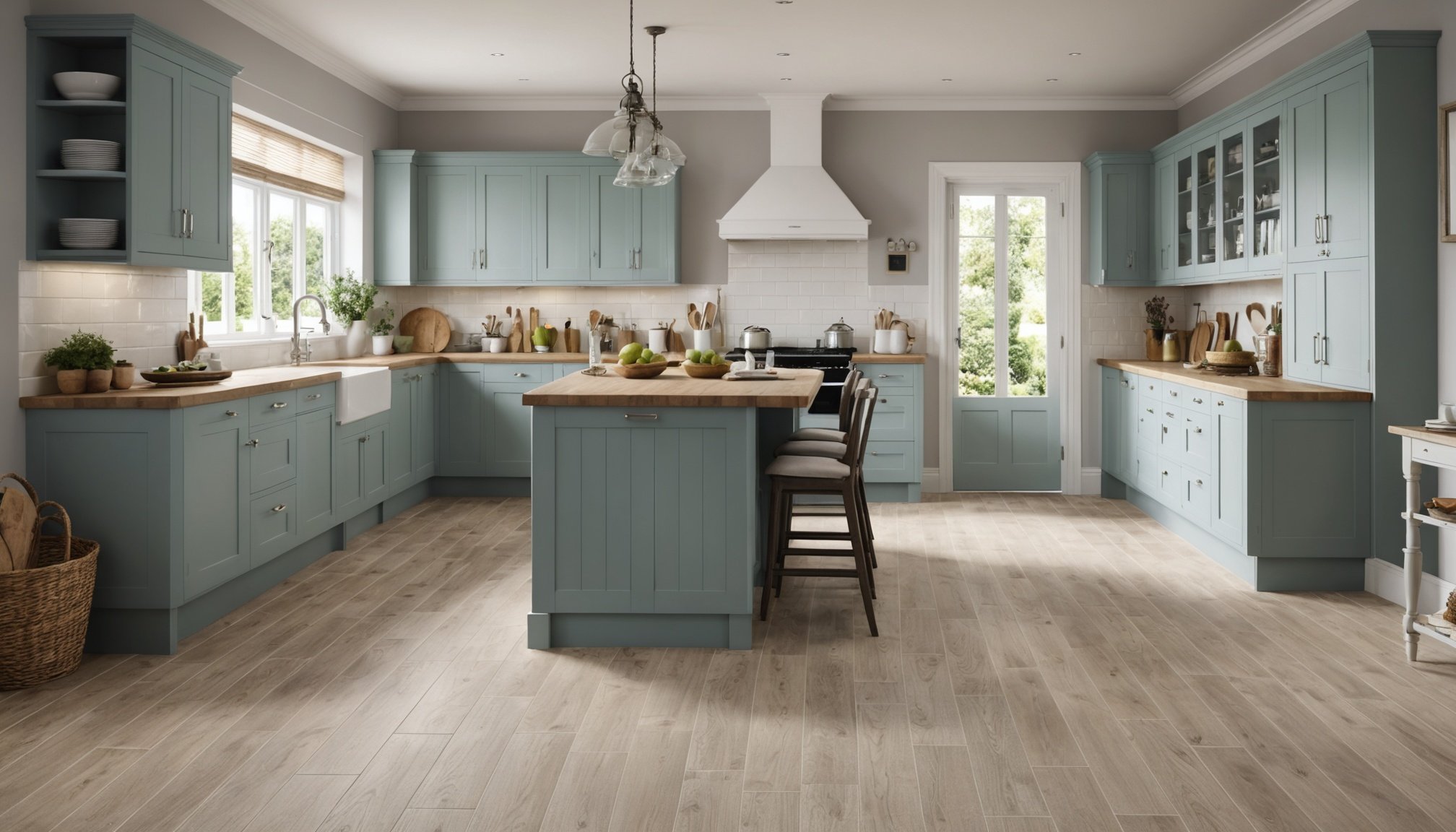Understanding Coastal Kitchen Flooring Needs
Choosing the right coastal kitchen flooring is critical given the unique challenges posed by the UK climate. Coastal areas often experience high humidity, exposure to salt and sand, each of which can significantly affect flooring durability. These factors necessitate careful material selection to ensure longevity and performance.
Moisture-resistance is a foundational attribute when selecting flooring materials. In high humidity environments, flooring prone to water damage or warping can quickly deteriorate. Moisture-resistant options such as vinyl, porcelain, or ceramic tiles are ideal, providing resilience against water seepage and subsequent degradation. These materials not only resist moisture but also maintain structural integrity over time.
Topic to read : Eco-Conscious Coffee Maker Guide: A Comprehensive UK Handbook for Sustainable Living
Furthermore, exposure to salt and sand can wear down flooring, affecting both its aesthetic and functional qualities. Coastal kitchen flooring should be scratch-resistant to withstand the abrasiveness of sand, with low-maintenance requirements to simplify cleaning and upkeep.
Ensuring flooring can handle these environmental pressures results in fewer repairs and replacements, translating to long-term cost savings. By acknowledging these specific needs—durability and moisture resistance—homeowners can effectively protect their investment and maintain an appealing kitchen environment. Making an informed choice in materials and design tailored to coastal challenges fosters both practicality and aesthetic satisfaction.
Also to read : Premier UK Food Processors for Wholesome Homemade Baby Food Creations
Overview of Flooring Options for Coastal Homes
Selecting kitchen flooring options for coastal homes involves balancing functionality with aesthetics. Tiles provide a robust choice, ideal for coastal climates due to their durability and resistance to moisture and salt exposure. Their non-porous surfaces make them easy to clean, while varied designs allow for personalisation that complements coastal decor.
Wood flooring offers natural beauty and warmth but comes with caveats in high-humidity environments. The tendency to warp and swell necessitates selecting engineered wood with improved moisture resistance. This option can still evoke a warm aesthetic while ensuring greater resilience against coastal elements.
Vinyl flooring emerges as a versatile alternative. Known for its flexibility and moisture resistance, it stands tough against the harsh coastal environment. Its ease of maintenance and installation, along with cost-effectiveness, adds to its practicality. Available in various textures and styles, vinyl can mimic more traditional looks like wood or stone, fitting seamlessly into coastal design themes.
Each material has distinct benefits and limitations, making it crucial to consider both environmental challenges and stylistic preferences in decision-making. Aligning the choice of materials with the unique demands of coastal kitchens ensures both longevity and harmonious interior design.
Pros and Cons of Common Flooring Materials
When considering flooring pros and cons for coastal kitchens, each material presents unique characteristics. Tiles stand out with significant advantages in coastal areas. They offer exceptional moisture resistance, which is crucial in humid environments where water damage is a concern. Their robust nature ensures they endure the wear caused by salt and sand, maintaining their aesthetic appeal over time. Tiles are easy to clean, making them practical for busy kitchen spaces.
Conversely, hardwood flooring poses challenges in high humidity. While aesthetically pleasing, its tendency to warp and swell can be problematic. This makes it less suitable for coastal conditions unless treated with specific moisture-resistant seals or coatings. Such treatments, however, can add to maintenance demands and costs.
Vinyl flooring provides a flexible and cost-effective alternative. Its ability to mimic other materials like wood or stone fits well with various design schemes. Moreover, vinyl’s excellent moisture resistance makes it suitable for coastal kitchens. Despite its merits, vinyl can sometimes fall short in replicating the authentic look and feel of natural materials. Nonetheless, it remains popular due to its balance of affordability, durability, and aesthetic versatility.

